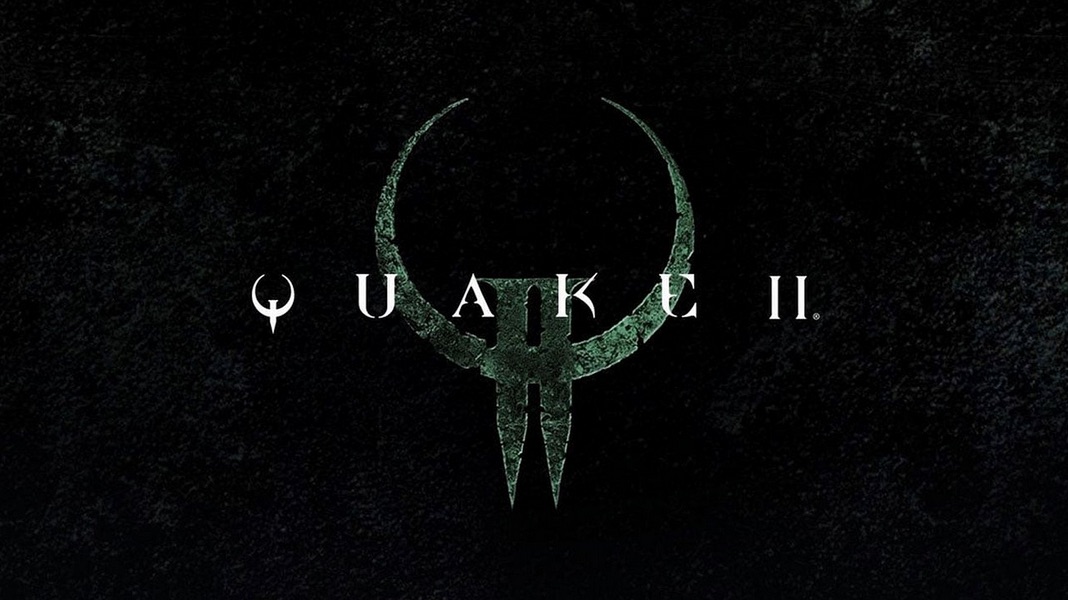The original Quake wasn’t exactly a story-driven game; it had an excuse plot rooted in Lovecraftian influences, set in what could best be described as industrial-gothic fortresses and super dungeons. The only things that mattered were staying alive and killing anything that moved. It was a perfect first-person shooter that managed to surpass id Software’s previous efforts with Doom, both artistically and technologically.
Quake II pushed the genre further with its sprawling levels, multi-step mission structure, and featured multiplayer. The multiplayer aspect, in particular, became a crucial pillar of Quake II, ultimately defining arena shooting gameplay as the world knows it today.
In 2021, Nightdive Studios successfully crafted a definitive remaster of Quake, and now they’ve set their sights on its sequel. While there’s still room for improvement, how has Nightdive Studios enhanced this divisive game? Was this shooter worth remastering? You’ll find out in this Quake II review!
Quake II
Developer: id Software, Nightdive Studios, Machine Games
Publisher: Bethesda Softworks
Platforms: Windows PC, Xbox One, Xbox Series X|S, Nintendo 64 (as Quake II 64), Nintendo Switch, PlayStation, PlayStation 4, PlayStation 5 (reviewed)
Release Date: August 10, 2023
Price: $9.99 USD
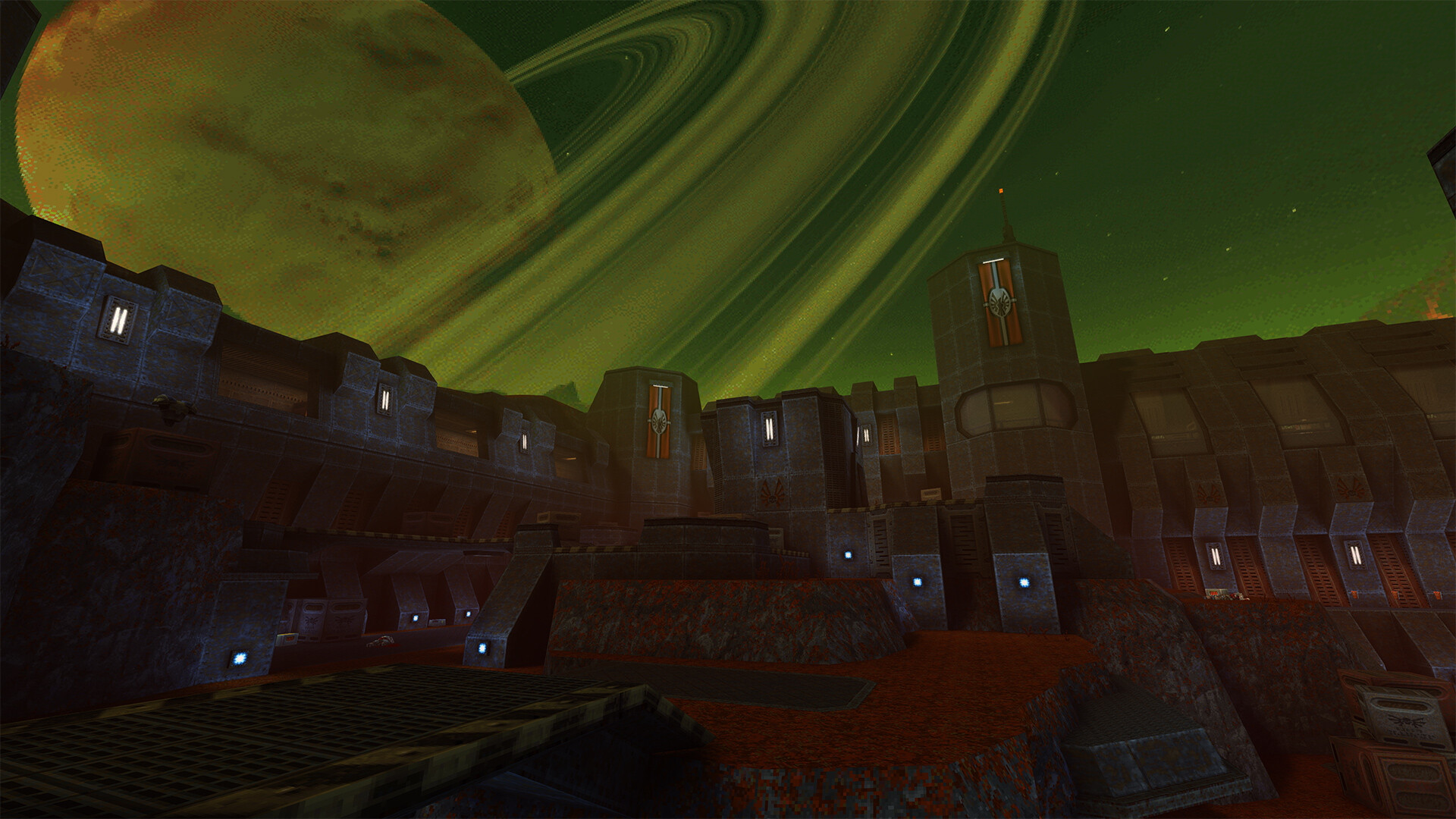
Quake II‘s story is seemingly completely divorced from the events of the first Quake. There are no references to the Netherworld or Operation: Counterstrike, and Shub-Niggurath and its spawn are not part of the lore at all. Quake II revolves around a race of cyborgs known as the Strogg. After a botched aerial insertion, the protagonist wages a one-man war against them.
Back in 1997, the idea of space marines hadn’t yet been overused. Arcane magic was traded for cybernetic nightmarish factories, mines, and industrial installations. The gothic ambiance gave way to a fusion of Borg and Warhammer 40,000 aesthetics. When Quake II was new, there weren’t many games like it. There was no Gears of War, Killzone, Halo, or Mass Effect to drain the concept dry.
Experiencing Quake II and recognizing it as one of the earliest examples of its kind is fascinating. It’s clear that the copycats failed to grasp what made Quake II appealing in the first place, and much of it has to do with its modest story, visceral action, and emphasis on dense level design.
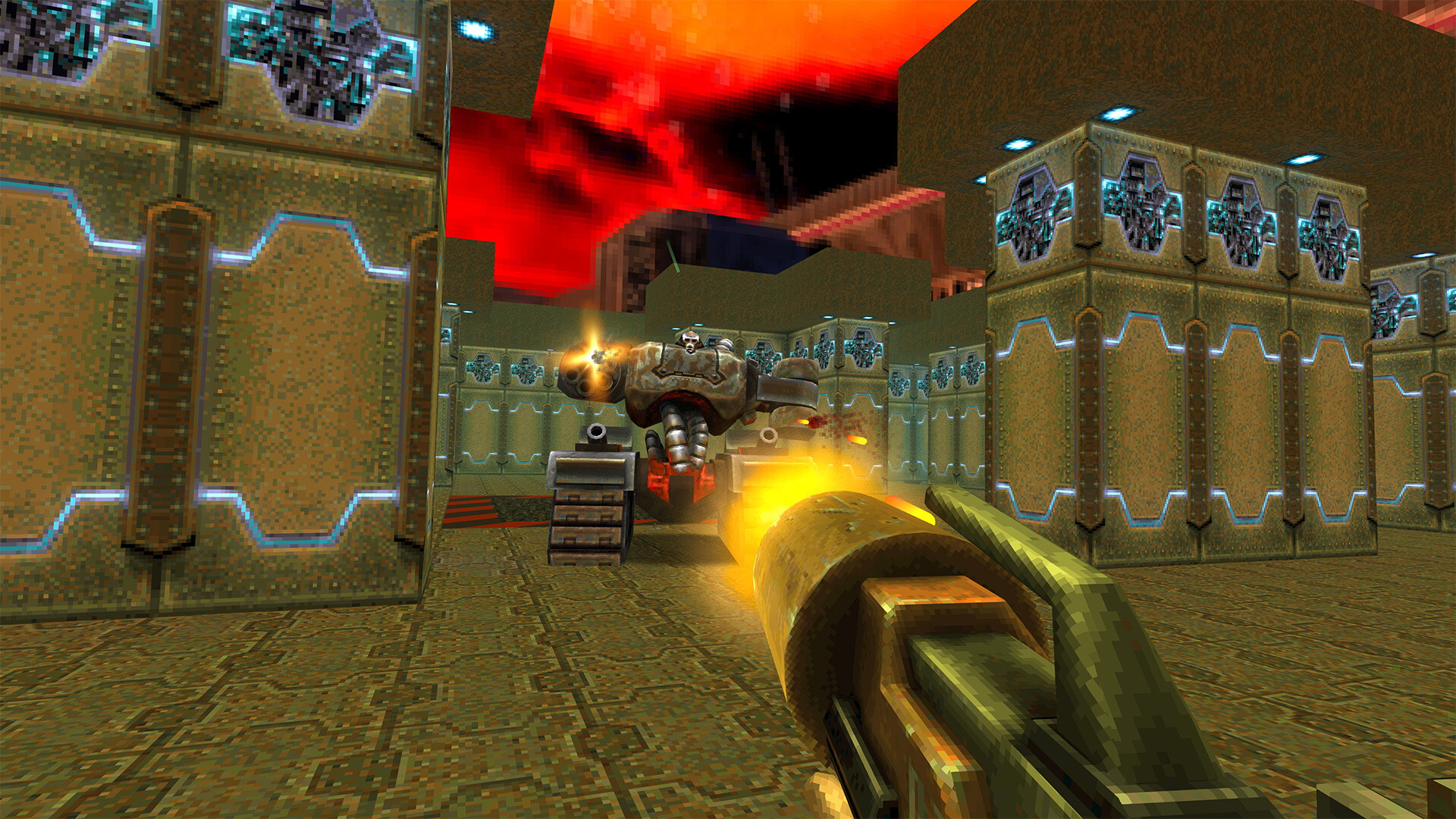
The tension in the air is palpable like every shadow is about to unleash a psychotic Strogg. Armed with some devastating byzantine firepower, gamers get to create a symphony of chaos against these mechanoid freaks. The sounds of the weapons reverberate through metal hallways, making survival feel like a frantic and manic war of attrition.
The Thunderbolt practically channels the power of Zeus. With a crackling burst of energy, it shoots lightning bolts that literally dance around the battlefield, hunting down enemies with a mind of its own. The Railgun is a sharpshooter’s dream and a target’s worst nightmare. It launches an electrified shot with accuracy like it’s bending time and space just to hit its mark.
The BFG10K is a beast that unfurls a ball of energy that devours everything in its path. The ground shakes, the air goes kaboom, and when the dust settles, all that’s left are bewildered ghostly echoes.
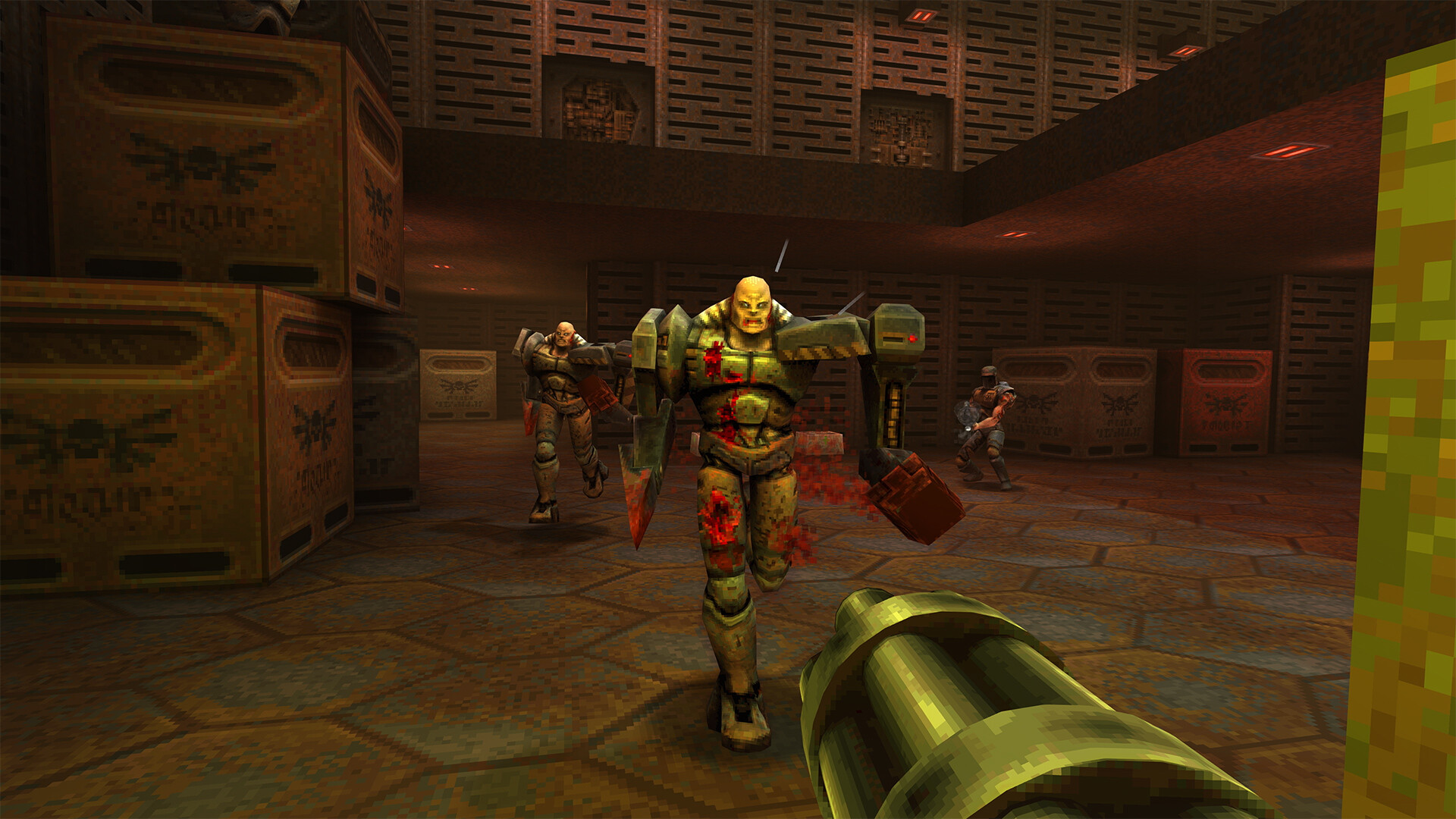
The boys at Nightdive seized the opportunity to enhance the feel of each weapon. They’ve added muzzle flashes to give more realistic feedback. They’ve also toned down the recoil compared to the original, making accurate shots on the move much easier. That’s a big deal since Quake II practically insists that players keep moving non-stop.
Sonic Mayhem was put on music duties. While it’s too bad Trent Reznor didn’t have the chance to return, Quake II’s music heavily incorporates electronic synths, mechanical sounds, and rhythmic beats, all working together to build tension and urgency. The tracks frequently match the rapid action of the game, adding to the rush players feel during intense combat scenes and haunting melodies that contribute to the foreboding atmosphere.
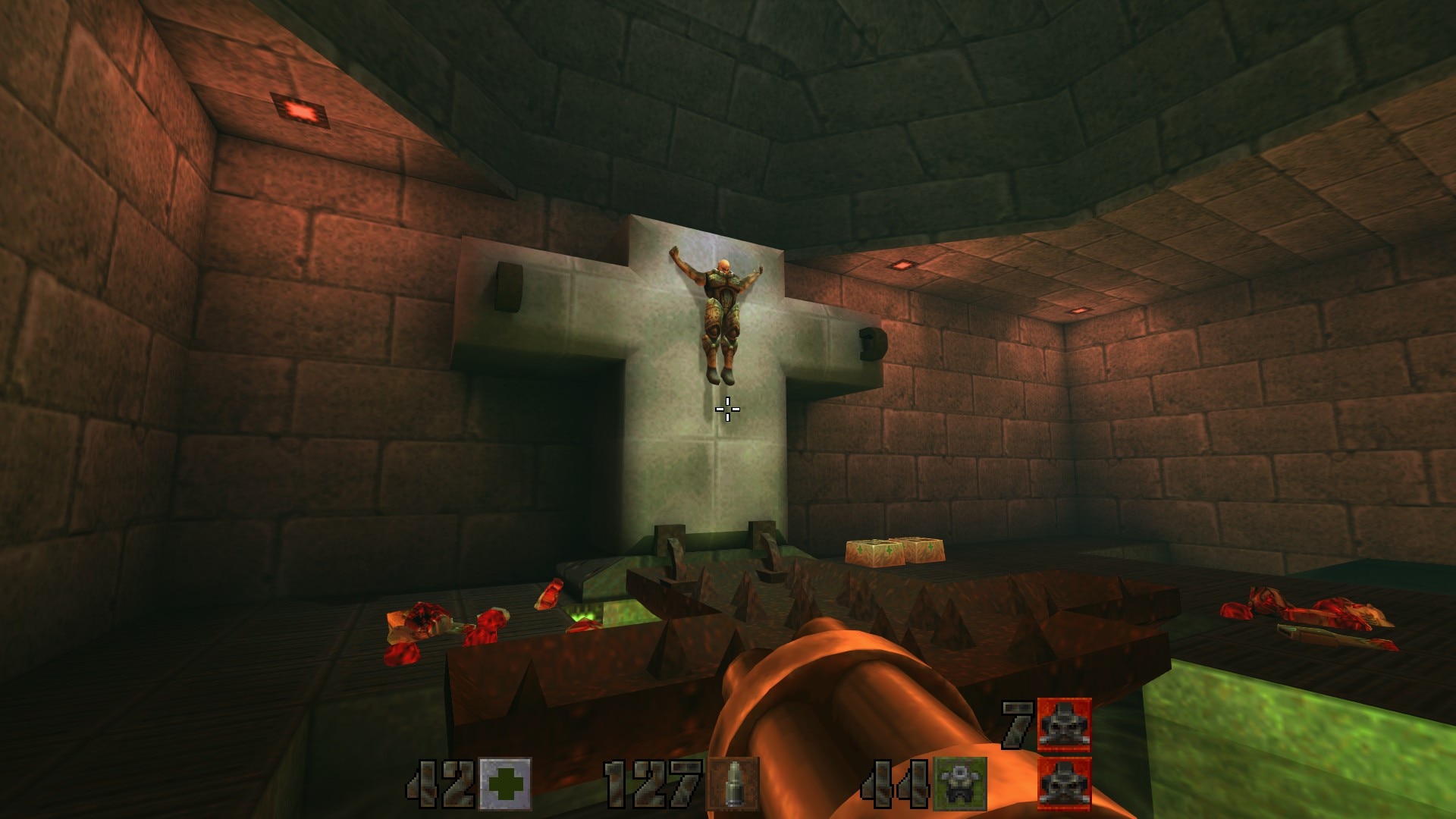
Nightdive has also speeded up the weapon-switching process and made it more responsive. The weapon wheel that was in the first Quake remaster is back and now it’s also on the inventory screen. No more slow cycle-through of each item one by one – now you can slap on that rebreather or hazmat suit in a flash.
This kind of dedication to the nitty-gritty details and the effort they’ve put into improving the experience makes Quake II step up its game so players can really appreciate its finer points… like the fluid, aggressive, and intense sweat-running-down-your-face action.
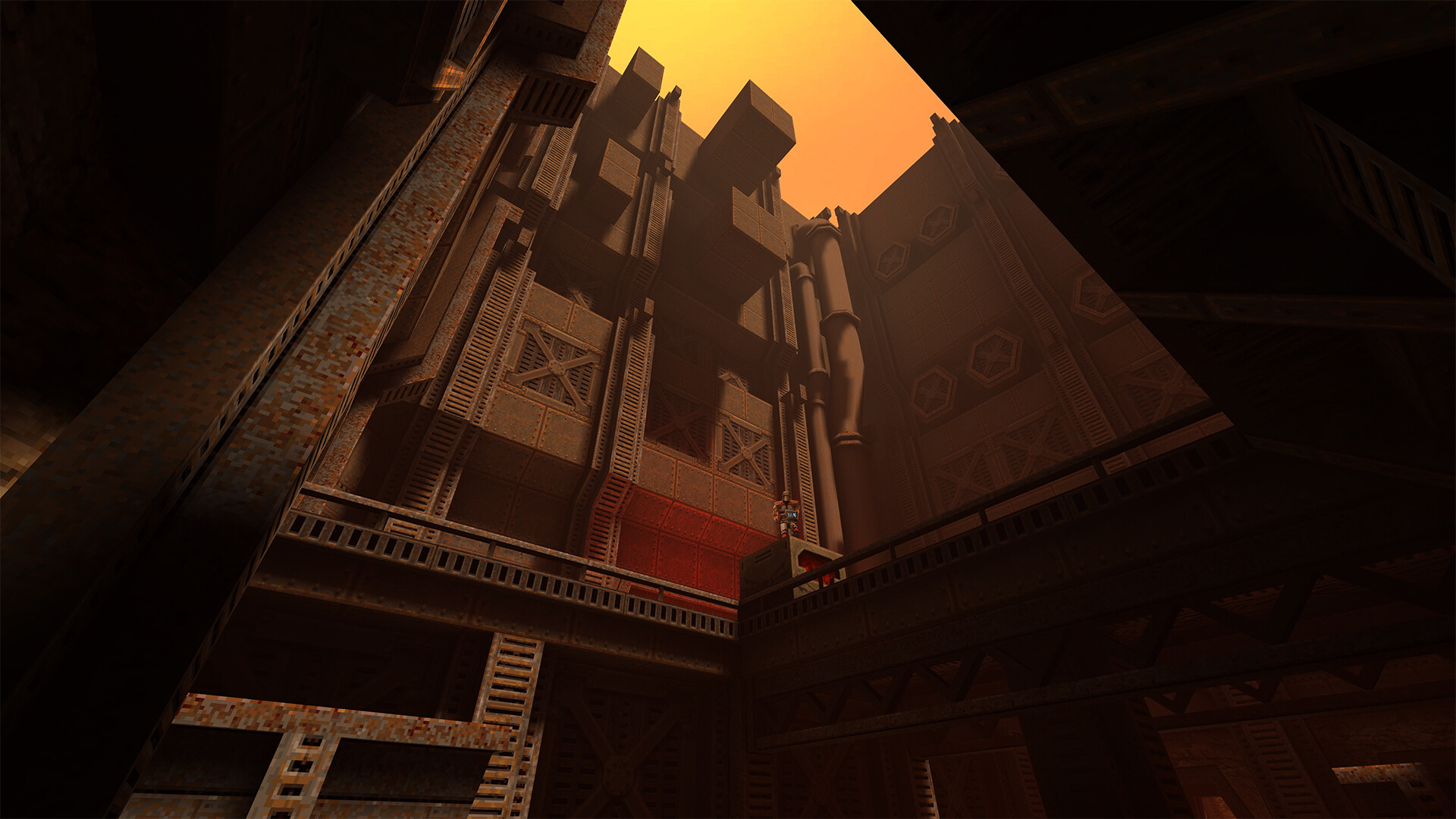
The previous game featured levels that were essentially standalone stages, where players had the simple goal of reaching the end. This usually involved grabbing keys, hitting a few switches, and maybe battling with a couple of Shamblers. It was like a progression from Doom‘s gameplay. However, in Quake II, things have become more intricate.
The levels have ballooned in size and flow naturally from one to another, creating a more immersive experience. Gamers might even find themselves doing a bit of backtracking, giving each stage a sort of mini-metroidvania feel. Impressively, there are these entirely optional secret areas that are about the size of a Quake 1 stage – talk about going above and beyond.
Every nook and cranny has multiple paths, hidden corridors, or mysterious corners that lead to something intriguing. There are multiple objectives and sometimes actions even have repercussions in later areas. Quake II is thinking ahead and delves much deeper than most shooters that followed in its footsteps.
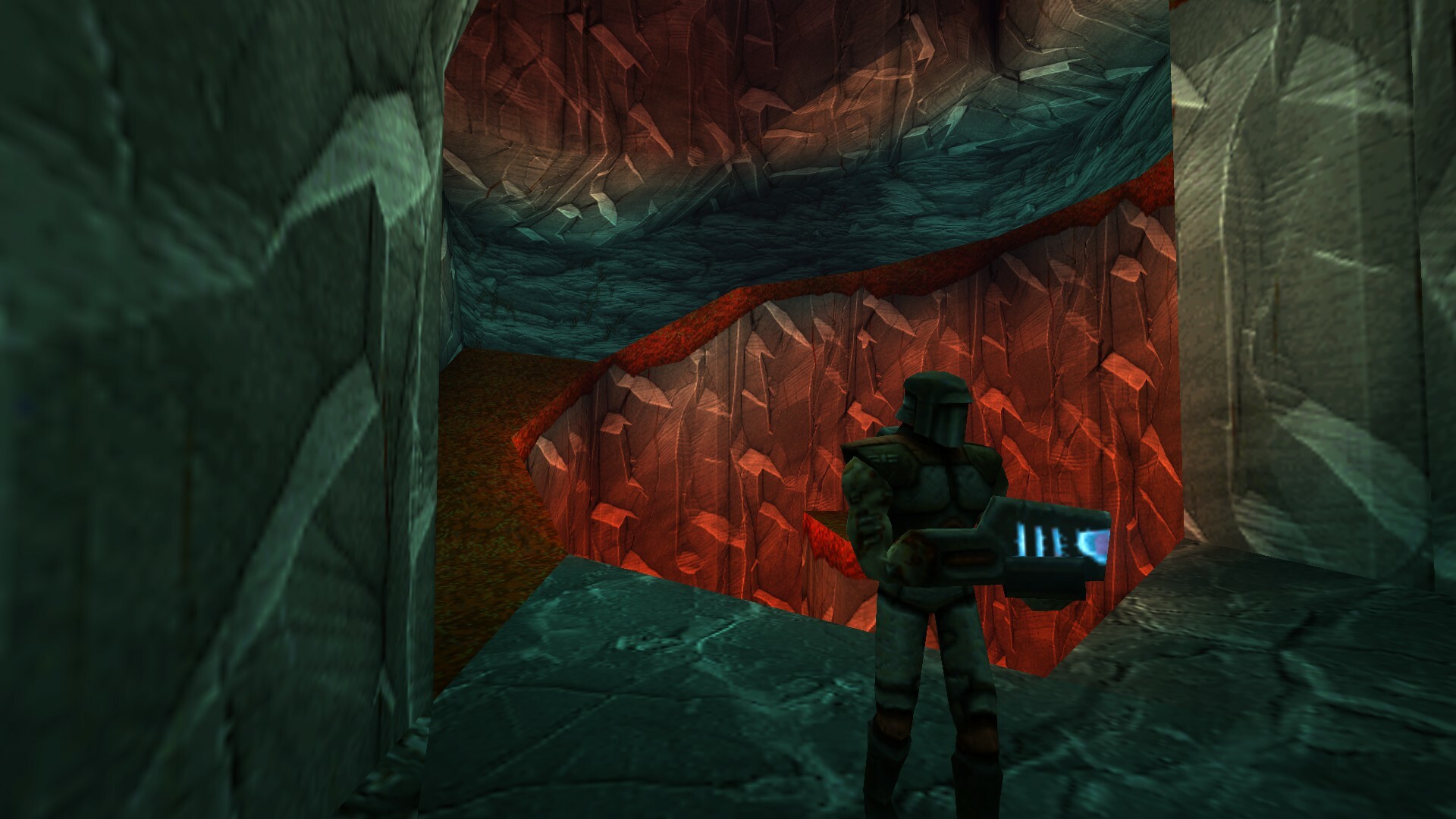
This remaster goes way beyond the usual standards. It offers a whole range of options, a bunch of tweaks that let players shape the game to match their own preferences. The upgraded lighting gives the landscapes a stunning new radiance, and the motion blur adds a visceral bite to the action. On top of all the enhancements, all DLC campaigns are present, and an amazing new one made by Machine Games.
In Call of the Machine, Quake II’s gameplay reaches its peak. It even outshines the base Quake II campaign, not just in quality but also in the sheer amount of content and variety. The biggest surprise is that Machine Games found a way to connect Quake with its sequel in Call of the Machine.
Machine Games has taken the Quake II engine to its absolute limit and conjured up some of the most imaginative stages ever seen in a Quake game. This remaster is incredibly comprehensive and jam-packed with thrilling action, but it’s Call of the Machine that will keep gamers engaged and stands out as the ultimate highlight of this package.
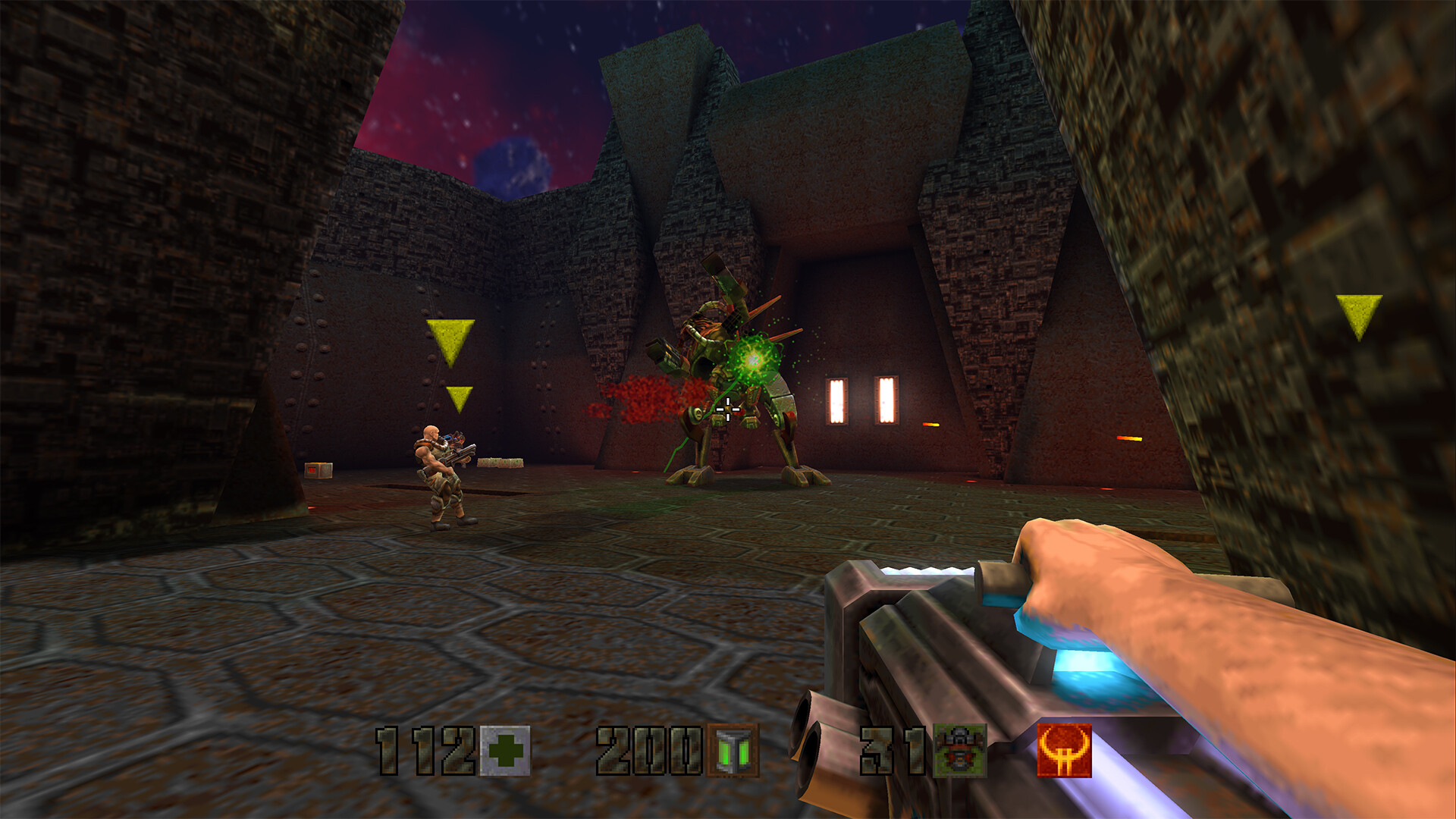
The remaster also includes stages from Quake II 64. The Nintendo 64 version of Quake II was intriguing because it didn’t actually utilize the Quake II engine; instead, it used the engine from the first Quake. Some of the art direction and stages took inspiration from Quake II. However, the Nintendo 64 version was still constrained by the limitations of the first Quake engine, so the levels reverted to small maps rather than expansive interconnected hubs.
Quake II 64 is quite short and mainly features unique levels, making it an interesting curiosity for fans or nostalgic gamers who grew up with it. The Reckoning doesn’t manage to impress as much due to its bland and simplistic level design. The layouts are uninspiring, and the placement of secret areas seems quite haphazard, to the point where it might lull you to sleep with its lack of creativity.
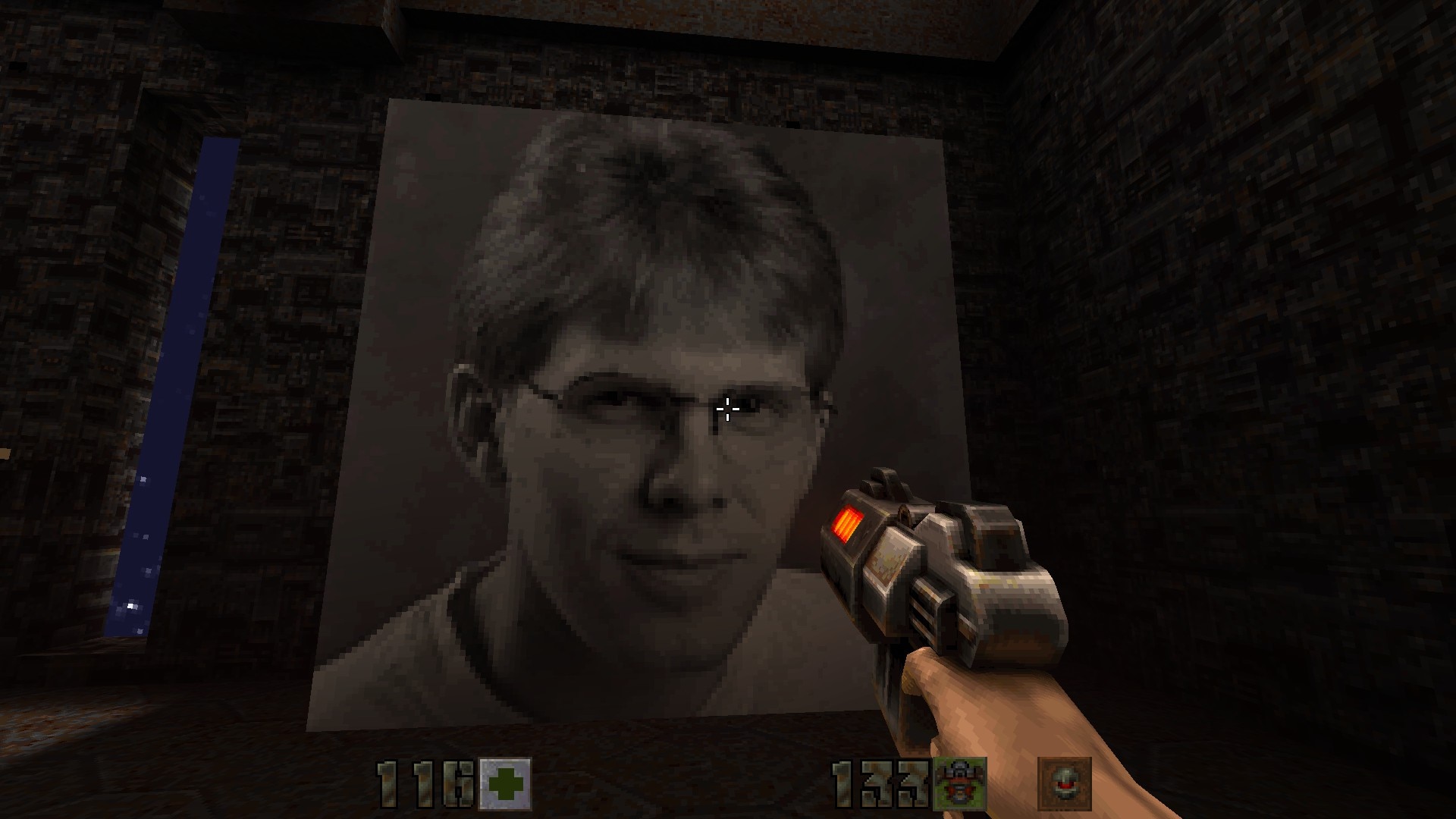
Some gamers often label Quake II as a weaker effort from id Software, yet they still acknowledge that it surpasses most shooters due to its prestigious heritage. As someone who only experienced the original Quake, it’s surprising to see how the sequel manages to enhance almost every aspect of it. Granted, the version being reviewed is a new and improved iteration of Quake II, but it’s difficult to agree with the sentiment that it’s an inferior game.
Whether or not Quake II‘s ties to the original are somewhat loose doesn’t really matter. It might only carry the Quake name for marketing purposes, but that could have also influenced fans’ expectations. At its core, Quake II is more aggressive, faster, and larger in scale than its predecessor. It doesn’t replace the original; instead, it confidently stands beside it.
Quake II was reviewed on PlayStation 5 using a code provided by Bethesda Software. Additional information about Niche Gamer’s review/ethics policy can be found here. Double Dragon Gaiden: Rise of the Dragons is now available for Windows PC (via Steam), Nintendo Switch, Xbox One, Xbox Series X|S, PlayStation 4, and PlayStation 5.
